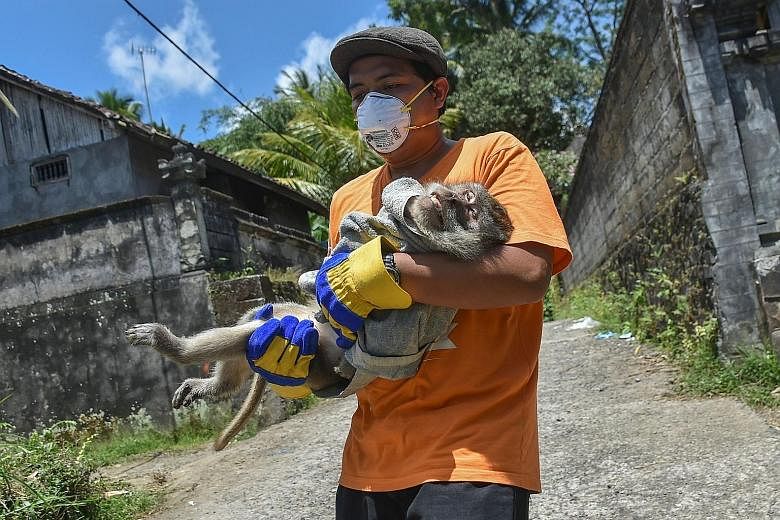KARANGASEM (Indonesia) • Volunteers are risking their lives to save tens of thousands of animals left at the mercy of a rumbling volcano on the tourist island of Bali, making perilous trips into the red zone to relocate them.
Mount Agung, about 75km from the resort hub of Kuta, has been shaking since August, causing some 144,000 people to evacuate their homes over the past week as experts warn an eruption could be imminent. The sheer number of evacuees led officials yesterday to urge those who live outside the immediate danger zone to return home.
But even as evacuees have been streaming into the temporary shelters in recent weeks, thousands of animals have been left in the danger zone, the area most at risk of the volcano's cascading ash and hot gas.
Ms Vio Verandhini's organisation is one of several that have formed a response unit making dangerous trips into the red zone, which extends between 9km and 12km from the mountain's summit.
"I'm really worried because all of us that work together to rescue the animals don't know when the eruption will be," Ms Verandhini, from the Jakarta Animal Aid Network, told Agence France-Presse.
There are hundreds of tremors each day triggered by the volcano, a handful of which register as magnitude 2 and magnitude 3, strong enough to rock furniture.
The animals are relocated to shelters where they are fed and cared for, and their owners are encouraged to visit as often as possible to ensure their upkeep.
The Indonesian Centre for Volcanology and Geological Hazard Mitigation said last Friday that remote satellite sensing had picked up new steam emissions and thermal areas within the crater.
White steam clouds above the summit have been observed with greater frequency over the past three days, increasing the probability of an eruption, the centre said.
The slopes of Mount Agung are a hub for cattle farming in the region, providing an important source of income for local communities.
Around 10,000 cows have been moved so far in an evacuation aided by the government, Indonesia's disaster mitigation agency said, but there are 20,000 more to relocate.
The coordinator of a government livestock rescue team, Mr Natakusuma, who goes by one name, said some farmers were sleeping at evacuation centres but returning to tend to their cattle during the day.
"Emotionally, it's really hard for the farmers to part with their cattle, not only for economic reasons but also (because) they care so much about the animals," he said.
"Some insisted they stay in their village with their livestock even though their safety is in danger."
AGENCE FRANCE-PRESSE

